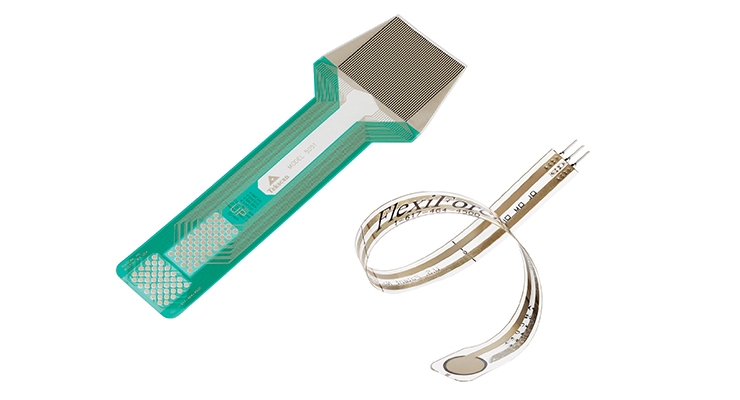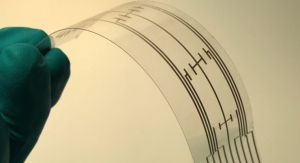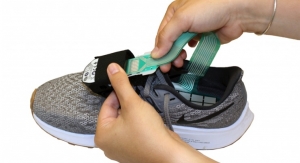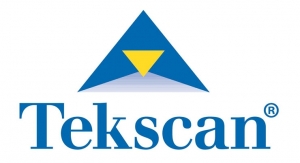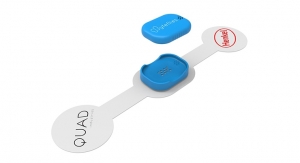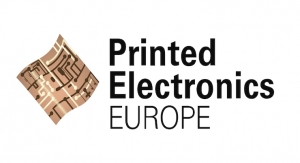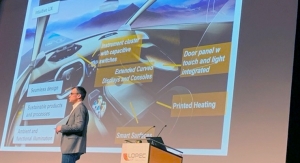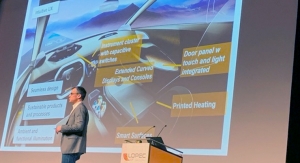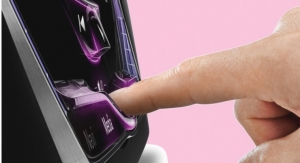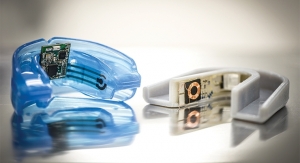David Savastano, Editor06.12.19
From automotive to health care and much more, there are plenty of opportunities for pressure sensors. Since the early 1980s, Tekscan, Inc. has been at the forefront of this field, and its ultra-thin force- and pressure-sensing technology are earning numerous awards: In the last six months, Tekscan has received the R&D 100 Award for Strideway gait analysis system, and Control Engineering Polska presented its Product of the Year 2018 to Tekscan for its High Speed TireScan system, which captures and analyzes tire behavior at speeds up to 165 mph.
Throughout its entire 30+ years, Tekscan’s focus has been on sensors beginning with the initial idea of creating a sensor for dentists to use to determine how teeth come together.
“Our company started because of dentists,” Tekscan CTO Robert Podoloff said. “In 1983, PCs have just come out and a prosthodontist in the Boston area went to an adult education class that was an introduction to personal computers. He wondered if there is a sensor technology that tells how teeth come together. He happens to have a patient who he knows went to MIT, and he asks his patient if he knows anyone who is working on these kinds of sensors. Eventually they contacted me.”
Podoloff was a graduate student in the Artificial Intelligence lab at MIT, and while it was a new idea, it caught his eye and he and his team began developing products.
“I knew what the state-of-the-art was in sensor technology, and I knew that nothing existed like this,” said Podoloff. “We started to work on a tactile sensor. As it happens, my father was a manufacturers rep for a company that made flexible heaters for mirrors in cars, and he had a box of these in our closet. I took some of those devices apart and made a sensor out of them. We even came up with a way to print them. Eventually we came out with our dental product, called T-Scan, and released it.”
T-Scan was developed for dental occlusion analysis, and it was a success. Podoloff thought the project was worth noting, and he reached out to Popular Science to mention T-Scan.
“I was a big fan of Popular Science magazine, and they had a section called Best of What’s New. I wrote in and told them about our dental sensors, thinking it would go nowhere. Popular Science saw it and named it one of their Best of What’s New for 1984 and put us on the cover,” he recalled.
“A guy from Detroit who worked for a gasket company saw this, and asked if we could do this for gaskets,” he continued. “We couldn’t see any reason why not, so we developed a sensor that could tell how well the gasket sealed in the engine. We started making it for them. We wrote an article for Automotive Engineering magazine, and a guy from Goodyear called us and asked if we could do this for tires. We made a system for them for tires. Then we got calls from other major companies for brake pads and brake lines. Each of these applications has led to another use.”
Today, Tekscan has four divisions, covering medical, dental; industrial (pressure mapping) and embedded products. As it was since the company’s beginning, Tekscan is active in printing flexible electronics for the dental and medical markets; Dr. Scholl’s kiosk is one example of what Tekscan manufacturers. The company produces sensors for a wide range of applications in those markets. Podoloff mentioned a few examples of how sensors can be applied in healthcare.
“We are a supplier of sensors to a major glucose pump manufacture and in that case, we are a safety device, an occlusal sensor,” said Podoloff. “If the tube swells because of a blockage, it will sense the occlusion. Another place we are used is knee replacement. You want to make sure the knee is balanced – we can look at the force to adjust that the knee is balanced.”
Automotive is another core market for Tekscan.
“We are doing all kinds of things in automotive, including brake pads and gaskets,” said Podoloff. “Each of the applications we have taken on has led to another. For example, some people wanted to see how brake lines swelled. Now our technology is being used in hybrid cars to look at batteries when they are charging to see if it is swelling when being overcharged. Another area in automotive is human interface with the car. One of the first things we did was seating, like how it supports your back, what happens when you are cornering. In another application, we make two sensors controlled by a foot switch that controls the speed for an electric trolling motor.”
Podoloff said that pressure sensor has come a long way in the past three decades, but consistency is a differentiator.
“Another thing that is unique about us is that we are an end-to-end manufacturer and do everything in our facility in Boston,” Podoloff said. “We mix the inks, we print the sensors, we build the electronics, we write the software, and by controlling that entire ecosystem it gives us a huge leg up on everybody else. In the 30 years we are doing this now, everyone claims they can print force sensitive transistors, and it’s true, but we can do it in a predictable manner. The technology that we created had all kinds of different applications.”
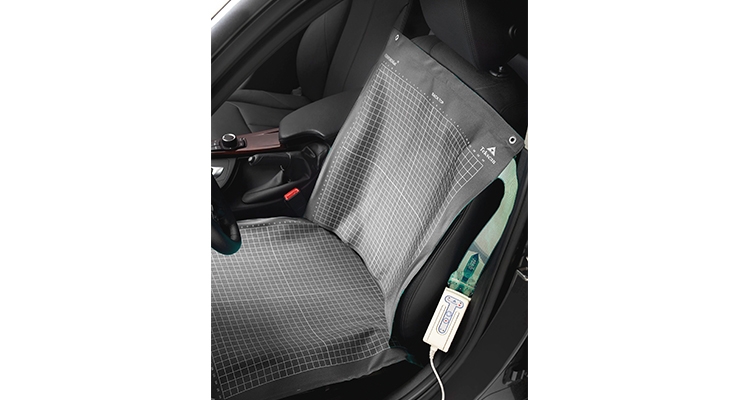
Source: Tekscan
Throughout its entire 30+ years, Tekscan’s focus has been on sensors beginning with the initial idea of creating a sensor for dentists to use to determine how teeth come together.
“Our company started because of dentists,” Tekscan CTO Robert Podoloff said. “In 1983, PCs have just come out and a prosthodontist in the Boston area went to an adult education class that was an introduction to personal computers. He wondered if there is a sensor technology that tells how teeth come together. He happens to have a patient who he knows went to MIT, and he asks his patient if he knows anyone who is working on these kinds of sensors. Eventually they contacted me.”
Podoloff was a graduate student in the Artificial Intelligence lab at MIT, and while it was a new idea, it caught his eye and he and his team began developing products.
“I knew what the state-of-the-art was in sensor technology, and I knew that nothing existed like this,” said Podoloff. “We started to work on a tactile sensor. As it happens, my father was a manufacturers rep for a company that made flexible heaters for mirrors in cars, and he had a box of these in our closet. I took some of those devices apart and made a sensor out of them. We even came up with a way to print them. Eventually we came out with our dental product, called T-Scan, and released it.”
T-Scan was developed for dental occlusion analysis, and it was a success. Podoloff thought the project was worth noting, and he reached out to Popular Science to mention T-Scan.
“I was a big fan of Popular Science magazine, and they had a section called Best of What’s New. I wrote in and told them about our dental sensors, thinking it would go nowhere. Popular Science saw it and named it one of their Best of What’s New for 1984 and put us on the cover,” he recalled.
“A guy from Detroit who worked for a gasket company saw this, and asked if we could do this for gaskets,” he continued. “We couldn’t see any reason why not, so we developed a sensor that could tell how well the gasket sealed in the engine. We started making it for them. We wrote an article for Automotive Engineering magazine, and a guy from Goodyear called us and asked if we could do this for tires. We made a system for them for tires. Then we got calls from other major companies for brake pads and brake lines. Each of these applications has led to another use.”
Today, Tekscan has four divisions, covering medical, dental; industrial (pressure mapping) and embedded products. As it was since the company’s beginning, Tekscan is active in printing flexible electronics for the dental and medical markets; Dr. Scholl’s kiosk is one example of what Tekscan manufacturers. The company produces sensors for a wide range of applications in those markets. Podoloff mentioned a few examples of how sensors can be applied in healthcare.
“We are a supplier of sensors to a major glucose pump manufacture and in that case, we are a safety device, an occlusal sensor,” said Podoloff. “If the tube swells because of a blockage, it will sense the occlusion. Another place we are used is knee replacement. You want to make sure the knee is balanced – we can look at the force to adjust that the knee is balanced.”
Automotive is another core market for Tekscan.
“We are doing all kinds of things in automotive, including brake pads and gaskets,” said Podoloff. “Each of the applications we have taken on has led to another. For example, some people wanted to see how brake lines swelled. Now our technology is being used in hybrid cars to look at batteries when they are charging to see if it is swelling when being overcharged. Another area in automotive is human interface with the car. One of the first things we did was seating, like how it supports your back, what happens when you are cornering. In another application, we make two sensors controlled by a foot switch that controls the speed for an electric trolling motor.”
Podoloff said that pressure sensor has come a long way in the past three decades, but consistency is a differentiator.
“Another thing that is unique about us is that we are an end-to-end manufacturer and do everything in our facility in Boston,” Podoloff said. “We mix the inks, we print the sensors, we build the electronics, we write the software, and by controlling that entire ecosystem it gives us a huge leg up on everybody else. In the 30 years we are doing this now, everyone claims they can print force sensitive transistors, and it’s true, but we can do it in a predictable manner. The technology that we created had all kinds of different applications.”

Source: Tekscan

